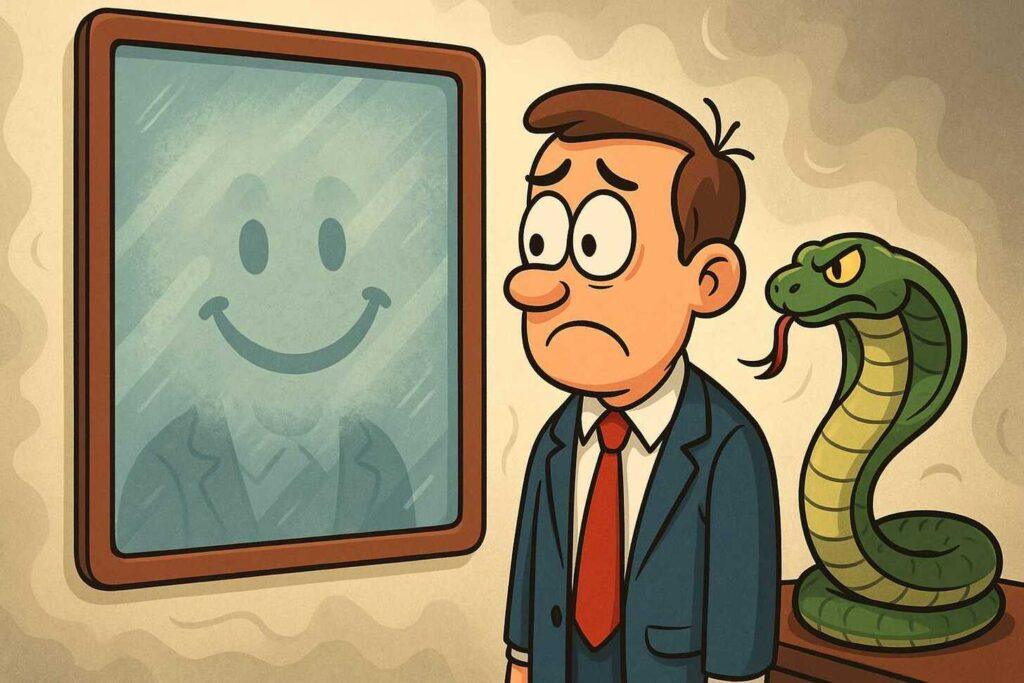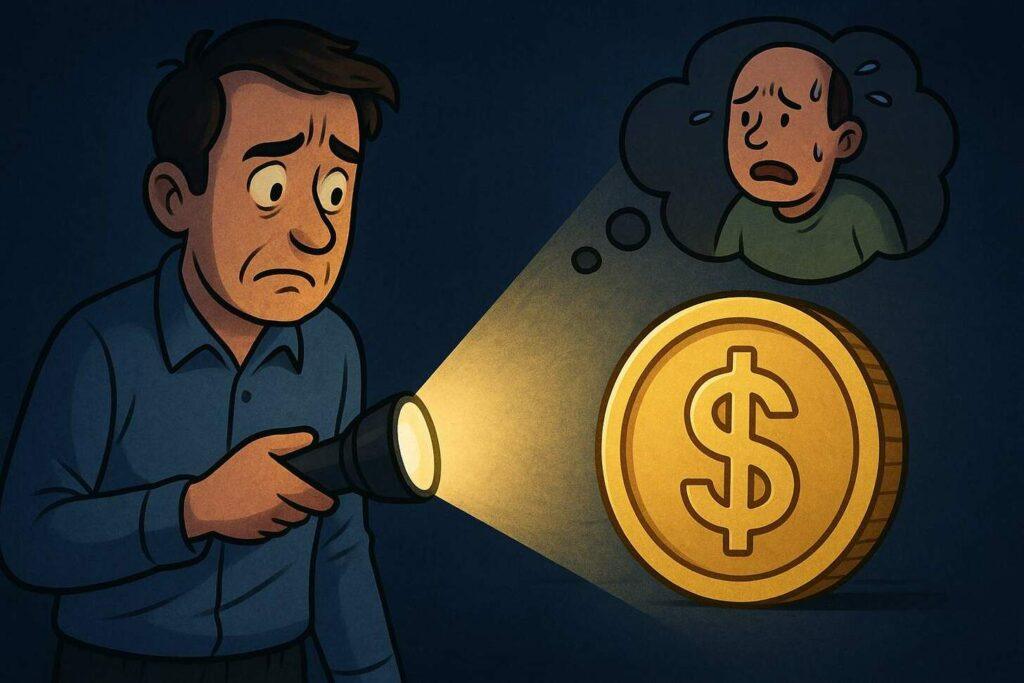The incentives mental model sheds light on why we make choices that might seem irrational. It shows how rewards, both seen and unseen, influence our actions. This can lead to decisions that aren’t always in our best interest.
This model is like a flashlight in the fog. It helps us understand the true reasons behind puzzling decisions. By seeing these reasons, we can improve the systems that guide our choices.
Think of mental models as simplified maps for navigating complex situations. They cut through noise to show what truly matters. The most powerful ones explain universal patterns – like how rewards shape actions across cultures and careers.
Here’s the core idea: behavior follows what gets rewarded. Whether it’s a sales team chasing bonuses or a toddler seeking attention, outcomes align with the incentives we create. This pattern repeats in relationships, workplaces, and public policies.
By the end of this article, you’ll see the world differently. Those baffling choices people make? They’re rarely random – just responses to visible and invisible rewards.
Ready to decode the hidden forces shaping decisions?
Key Takeaways
- Incentives mental model: Actions often follow predictable reward patterns, not logic
- This framework works for analyzing business strategies and personal habits
- Misaligned incentives create recurring problems
- Spotting hidden rewards helps avoid common traps
- Connects to other decision-making tools for better results
Introduction to the Incentives Mental Model
What really steers our daily choices? Behind every action lies a hidden network of incentives, carrots, and sticks. These drivers mold patterns in how we work, relate, and grow – often without conscious awareness of the mental models that influence people’s behavior in the world.
Defining Rewards, Punishments, and Behavioral Shaping
Rewards act like magnets pulling us toward specific paths. A compliment at work or bonus points in an app both nudge future actions. Punishments work differently – think speed cameras reducing reckless driving through consequence awareness.
Two main types shape outcomes. Positive drivers add desirable elements: recognition, money, or social approval. Negative drivers remove unwanted factors: fines for late payments or losing privileges for broken rules. Both methods work, but how they’re applied changes everything.
Consider workplace dynamics. Public praise (explicit reward) might boost team morale more effectively than a private paycheck bump. Yet unspoken expectations – like implicit pressure to answer emails after hours – can quietly drain motivation.
Research reveals non-monetary rewards often outlast cash bonuses in creating lasting change. A University of Chicago study found symbolic recognition increased volunteer retention by 34% compared to financial incentives alone.
This aligns with broader decision-making frameworks that prioritize psychological needs.
Three critical distinctions matter:
- Immediate vs delayed payoffs (weekend plans vs retirement savings)
- Personal vs systemic influences (individual habits vs corporate policies)
- Visible vs hidden triggers (sales targets vs unspoken office politics)
By mapping these forces, you gain power to reshape routines – yours and others’. The real magic happens when aligning short-term actions with long-term goals through intentional design.
Historical Perspectives on Incentives and Human Motivation

How did we come to understand the forces that drive human choices? Centuries of thinkers have mapped the relationship between rewards and actions – a journey that reshaped how we see societies and ourselves.
Insights from Adam Smith and Early Economic Thought
In 1776, Scottish philosopher Adam Smith observed something revolutionary. Marketplaces thrived not through charity, but because butchers and bakers sought personal gain. His “invisible hand” theory showed how self-interest could benefit entire communities when channeled properly.
Smith’s work revealed three truths about human nature:
- Personal benefit drives most exchanges
- Systems work best when individual and collective goals align
- Unintended consequences emerge when rewards clash
The Evolution from Classical to Behavioral Economics
By the 20th century, psychologists like B.F. Skinner demonstrated how consistent rewards shape habits. His experiments with operant conditioning proved actions increase when positively reinforced – a principle businesses still use today.
| Economic Approach | Key Insight | Real-World Impact |
|---|---|---|
| Classical Economics | People act rationally for maximum gain | Tax policies, salary structures |
| Behavioral Economics | Emotions and biases influence choices | Retirement savings plans, app notifications |
Modern researchers like Daniel Kahneman revealed gaps in traditional theories. Their work explains why employees might reject higher pay for flexible hours, or why shoppers overspend during sales. These discoveries transformed how we design motivation systems in education and healthcare.
What does this mean for you today? When you notice a puzzling choice – yours or others’ – ask: What hidden rewards might be steering this behavior? The answer often lies in lessons older than modern nations.
The Core Principles of Rewards and Penalties

What makes some strategies stick while others fail? The answer lies in two forces that guide every choice we make. Like sunlight and rain shaping a garden, these principles mold actions through predictable patterns.
Incentives Mental Model: Carrots, Sticks, and Lasting Change
Positive drivers work best when building new habits. A teacher’s gold star motivates first-grade readers. Sales teams hit targets faster with milestone bonuses. But there’s a catch: small rewards often fade once achieved.
Negative drivers stop unwanted actions. Think of speeding tickets reducing highway risks. Yet overuse creates resentment – like strict workplace policies that drain creativity. The sweet spot? Combining both approaches strategically.
Three factors determine success:
- Size matters: A 5% bonus rarely changes behavior – 20% does
- Speed counts: Weekly recognition beats annual reviews
- Visibility amplifies: Public praise often outperforms private checks
Parents know this dance well. Extra screen time (reward) gets homework done. Lost privileges (penalty) curb sibling fights. Both work, but timing shifts outcomes. Immediate consequences teach faster than Friday’s lecture.
Businesses using these principles see 42% higher goal completion rates. Why? Consistent application builds trust. Employees know what to expect – customers learn what’s valued. The rules stay simple: reward what you want more of, redirect what you don’t.
Incentives and Human Behavior: Real-World Examples

History brims with cautionary tales where reward systems and incentives produced disastrous results in people’s lives. Let’s unpack two iconic cases that expose the delicate balance between intention and behavior, illustrating the way mental models can influence outcomes.
Analyzing the Wells Fargo Scandal and Cobra Effect
Wells Fargo’s 2016 fake account crisis shows how pressure warps judgment. Employees facing unrealistic sales targets opened 3.5 million unauthorized accounts. Why? Their bonuses depended on hitting specific customer metrics – a classic case of measurement myopia.
This wasn’t greed. It was survival. Workers faced termination for missing goals, creating a culture where ethics became negotiable. The bank’s leadership learned too late: when you reward quantity over quality, you get quantity at any cost.
Colonial India’s snake problem offers another sobering lesson. Officials offered cash for dead cobras to reduce their population. Instead, citizens began breeding the reptiles for profit. When the bounty ended, breeders released their snakes – worsening the original crisis. This Cobra Effect now symbolizes solutions that backfire spectacularly.
Both cases reveal three critical flaws:
- Focusing on easy-to-measure metrics rather than meaningful outcomes
- Ignoring how rewards might incentivize cheating or shortcuts
- Failing to anticipate human creativity in gaming systems
Your local school district faces similar risks. Teachers “teaching to the test” for funding rewards often neglect broader learning. The pattern repeats wherever narrow targets overshadow holistic success.
Next time you design a goal – whether for employees or yourself – ask: Could this system be manipulated? What behaviors might emerge if someone takes this incentive to its logical extreme? The answers might save you from becoming tomorrow’s case study.
Incentives in Business: Short-Term Gains VS Long-Term Impact
The 2008 housing crash wasn’t an accident – it was a design flaw in the incentive system. Banks rewarded loan officers for pushing mortgages, not verifying borrower stability.
This created a ticking time bomb wrapped in commission checks, showcasing how behavior driven by short-term incentives can impact lives in a negative way.
Risky Banking Practices and Their Lasting Consequences
Mortgage brokers earned bonuses for closing deals quickly. Many stopped checking credit scores or income documents. The result? Loans defaulted in waves, collapsing entire financial systems. Quarterly profit goals overshadowed five-year stability plans.
Sales teams face similar traps today. Pushing unnecessary upgrades to hit monthly targets might boost earnings now. But customers remember feeling pressured – and take their business elsewhere next year.
| Focus Area | Short-Term Approach | Long-Term Strategy |
|---|---|---|
| Sales Targets | Push products at any cost | Build client trust through needs assessment |
| Employee Pay | Commission-only structures | Base salary + performance bonuses |
| Product Development | Cut safety testing to launch faster | Invest in durability research |
Some companies get it right. Costco pays employees 25% above industry averages. Lower turnover means better customer service – and steady revenue growth. Their system proves worker satisfaction drives lasting success.
Where does your organization stand? Are tomorrow’s goals being sacrificed for today’s numbers? The answer often hides in what gets celebrated at team meetings.
Incentives in Education: Beyond Teacher Bonuses

What happens when good intentions clash with classroom reality? Schools face a constant tug-of-war between measurable results and meaningful growth.
The answer often lies not in bigger rewards or incentives, but smarter systems that consider the consequences of our actions in the world of education. This example highlights the power of time and support in fostering a life-long love for learning.
When Bonuses Meet Classroom Reality
New York City’s heralded $75 million experiment in teacher incentive pay shook education circles. Researchers offered teachers cash rewards for improved test scores. Result? Zero impact.
But when combined with training workshops, student performance jumped 18%. This reveals a vital truth: motivation needs scaffolding.
Grades demonstrate this duality. They motivate homework completion but can kill curiosity. Students start asking “Will this be on the test?” instead of “Why does this matter?”. Narrow focus on scores often sacrifices deeper understanding.
Three patterns emerge:
- Rewards without support frustrate teachers
- External validation crowds out internal drive
- Simplified metrics distort true learning
Some districts now flip the script. Colorado’s Eagle County schools tie evaluations to student portfolios showing real-world projects. Teachers receive coaching to develop engaging lesson plans – not just test-prep drills. Early results show 22% higher parent satisfaction rates.
For parents and educators: What small changes could align daily tasks with lasting growth? Sometimes removing a sticker chart does more than adding another gold star.
Unintended Consequences and Perverse Incentives

Reward systems sometimes act like fogged mirrors – reflecting distorted versions of our true goals. The cobra effect phenomenon shows how attempts to solve problems often create new ones when designers overlook human creativity.
Consider customer service metrics. A call center rewarding short call times might see reps rushing conversations. Clients feel unheard, leading to more complaints. The system achieved efficiency – but eroded trust.
Three warning signs often precede these traps:
1. Narrow success measurements
Focusing only on visible outcomes (sales numbers, test scores) while ignoring side effects
2. Missing feedback loops
Failing to track how the reward changes behavior over time
3. Assumed motivations
Believing people value the same rewards as system designers
Avoiding these pitfalls requires asking: “What actions might this encourage that we’d regret later?” Like pruning a bonsai tree, shaping behavior demands constant adjustment – not just initial design.
Your turn: What current system in your life might be quietly steering people toward unwanted outcomes? Sometimes the real problem isn’t the behavior – it’s the invisible rules guiding it.
Designing Smarter Incentive Systems That Actually Work

Many systems are made with good intentions but fail due to oversimplification or bad feedback. Behavioral scientists suggest using a layered approach to rewards. This includes immediate recognition, long-term alignment, and accountability.
Google is a great example of this. They use 360-degree reviews and OKRs (Objectives and Key Results) to measure and improve team work. These methods are flexible, evolve over time, and are more effective than old methods.
Successful companies follow three key principles for incentives:
- Clarity: Employees clearly know what behaviors are rewarded
- Alignment: Incentives align with long-term goals, not just short-term numbers
- Feedback: Teams get real-time feedback to make adjustments
When done right, incentives don’t just boost output. They also help build a healthy culture.
Real-World Pitfalls of Misaligned Metrics
When systems reward the wrong metric, they often encourage gaming the rules instead of reaching the goal. In healthcare, for example, hospitals that reward short patient stays sometimes discharge people too early. This leads to higher readmission rates.
What was meant to improve efficiency instead adds cost and risk. Tech companies face similar issues. A content moderation team rewarded for number of reviews might rush through reports, leading to missed threats.
Over time, user trust drops—along with engagement and revenue. These examples show that perverse incentives are not rare exceptions; they’re built into systems that reward quantity over quality.
These misfires underscore why it’s vital to combine incentive design with feedback loops and long-term alignment. What looks efficient in the short term may turn out to be expensive in hindsight.
Conclusion
The incentives mental model reveals that behavior is often driven by rewards, not logic. This is true in education, business, and government. Incentives can shape outcomes in unexpected ways.
By knowing what really motivates people, we can create better systems. These systems should encourage growth, integrity, and long-term success. It’s not just about money or metrics.
So, when something seems odd, just ask: What’s being rewarded here? The answer could be a game-changer.


